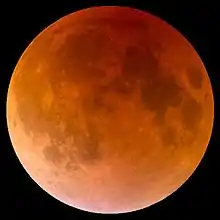November 1984 lunar eclipse
A penumbral lunar eclipse took place on November 8, 1984. This subtle penumbral eclipse may have been visible to a skilled observer at maximum eclipse. 90% of the Moon's disc was partially shaded by the Earth (none of it was in total shadow), which caused a gentle shadow gradient across its disc at maximum; the eclipse as a whole lasted 4 hours and 28 minutes.[1]
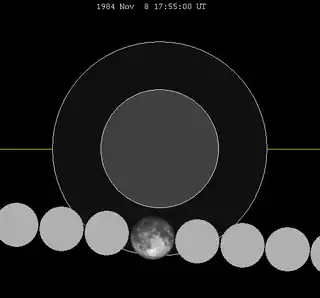
Visibility
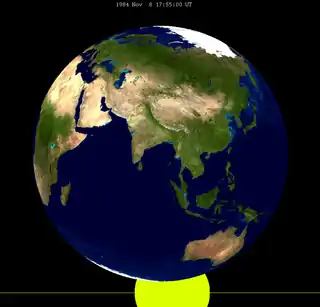
Related eclipses
Eclipses of 1984
Lunar year series
| Lunar eclipse series sets from 1984–1987 | ||||||||
|---|---|---|---|---|---|---|---|---|
| Descending node | Ascending node | |||||||
| Saros | Date Viewing |
Type Chart |
Gamma | Saros | Date Viewing |
Type Chart |
Gamma | |
| 111 | 1984 May 15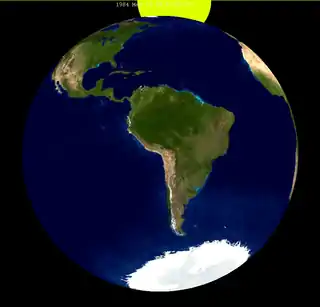 |
Penumbral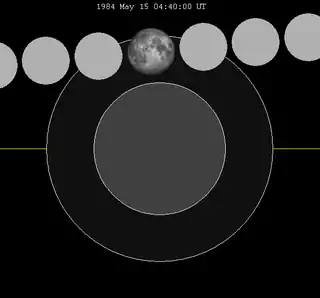 |
1.11308 | 116 | 1984 Nov 08 |
Penumbral |
-1.08998 | |
| 121 | 1985 May 04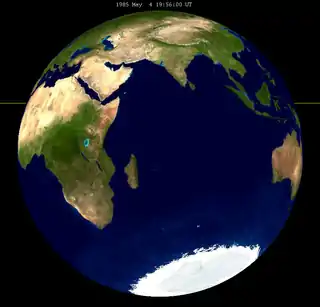 |
Total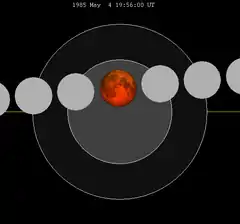 |
0.35197 | 126 | 1985 Oct 28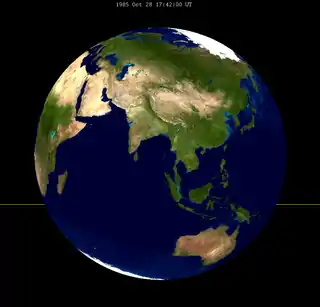 |
Total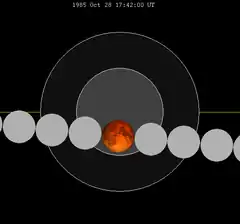 |
-0.40218 | |
| 131 | 1986 Apr 24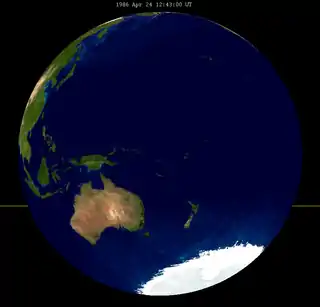 |
Total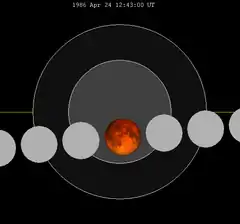 |
-0.36826 | 136 | 1986 Oct 17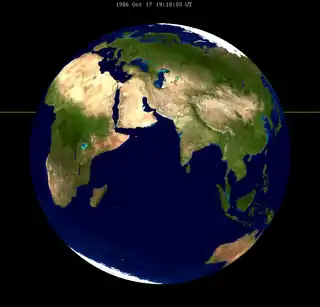 |
Total |
0.31887 | |
| 141 | 1987 Apr 14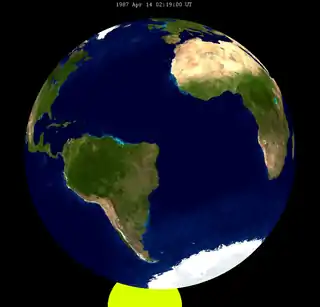 |
Penumbral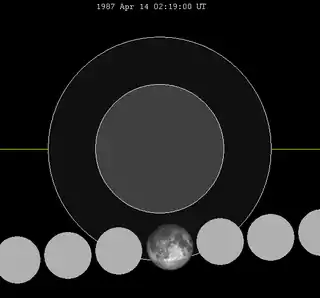 |
-1.13641 | 146 | 1987 Oct 07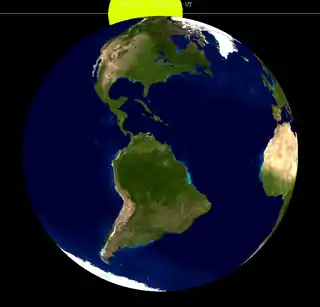 |
Penumbral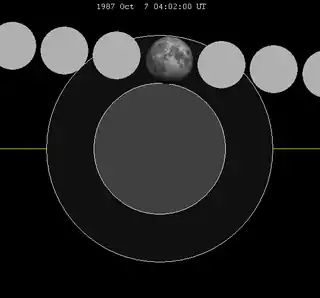 |
1.01890 | |
| Last set | 1984 Jun 13 | Last set | 1983 Dec 20 | |||||
| Next set | 1988 Mar 03 | Next set | 1988 Aug 27 | |||||
Metonic series
This eclipse is the first of four Metonic cycle lunar eclipses on the same date, November 8–9, each separated by 19 years:
The Metonic cycle repeats nearly exactly every 19 years and represents a Saros cycle plus one lunar year. Because it occurs on the same calendar date, the earth's shadow will be in nearly the same location relative to the background stars.
|
|
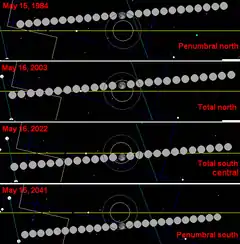 |
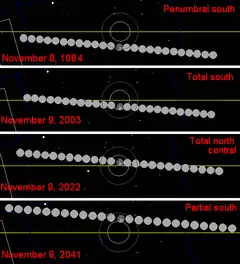 |
Half-Saros cycle
A lunar eclipse will be preceded and followed by solar eclipses by 9 years and 5.5 days (a half saros).[2] This lunar eclipse is related to two partial solar eclipses of Solar Saros 123.
| November 3, 1975 | November 13, 1993 |
|---|---|
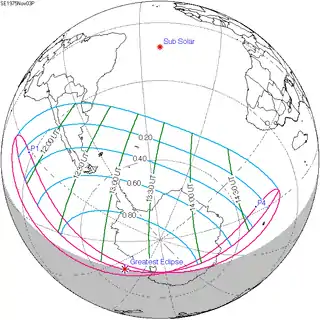 |
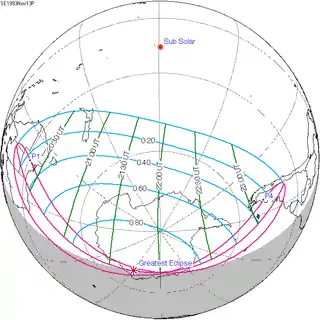 |
See also
- List of lunar eclipses
- List of 20th-century lunar eclipses
Notes
- Hermit Eclipse: Saros cycle 116
- Mathematical Astronomy Morsels, Jean Meeus, p.110, Chapter 18, The half-saros

